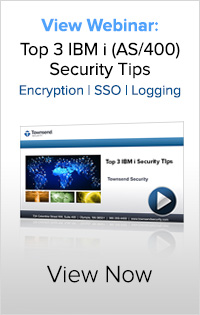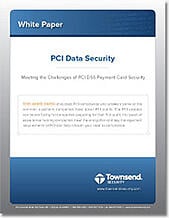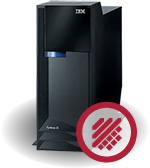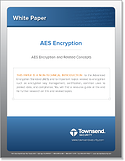
Here at Townsend Security we’re always engaging with businesses and organizations who not only need to meet data security compliance regulations such as PCI-DSS, HIPAA-HITECH, and GLBA/FFIEC, but are also deeply concerned about their customers’ data and the protection of their own company’s brand in the event of a data loss. Compliance is often the main driver of encryption and encryption key management, but these days the fear of a data breach weighs heavy on my peoples’ minds.
I recently spoke with a prospect who downloaded our AES Encryption Standards White Paper, and then decided to contact us. He was eager to find out about pricing and how AES encryption could work with his company. He told me about their need for encryption: he is very concerned about meeting HIPAA/HITECH and SOX Acts (both recommend if not require encryption and key management), and he knows his company’s data is unprotected in many critical areas. As he put it, they’re just waiting for something bad to happen. Although they are already encrypting much of their sensitive data (a great first step), they have outgrown their current encryption solution, need to encrypt more data, and are still out of compliance.
He said to me point blank, “We are sitting here with our pants down, waiting to be exposed!”
I asked the prospect, “Well let me ask you an easy first question to make sure our NIST Certified AES Encryption fits you and your company’s needs. What system are you currently running on?”
His reply: IBM i, Power 7.
I told him: WE CAN DO THAT!!
Townsend Security has a deep history with IBM i. We have been working with IBM i systems for over 20 years. With the new FIELDPROC capabilities in IBM i V7R1, our AES encryption solution installs into an IBM i customer’s environment, provides both our optimized and certified AES encryption libraries, and the encryption key management you need to be compliant. IBM has done the hard work of making this capability available, and we do the work of snapping in proper encryption and key management.
Later in our conversation, we discussed risk management, cost and what would happen to the company if they were exposed. He told his boss that they were subject to fines and damage to their company brand and would spend time remediating the breach instead of growing the business. Protecting the company’s sensitive data not only protects the business as a whole, it also protects your customers who rely on and trust your company to protect their personal information.
To learn more about Townsend Security’s easy and automatic encryption and key management solutions for IBM i contact us day at 1-800-357-1019. Or if you’re not into picking up that heavy phone, contact Kristie Edwards (kristie.edwards@townsendsecurity.com) today, and we’ll make sure we do the heavy lifting on our end. You might also enjoy watching a recording of our recent webinar, "Top 3 IBM i Security Tips,” presented by data security experts Patrick Townsend and Patrick Botz.






 FIELDPROC has been out for just over a year
FIELDPROC has been out for just over a year




